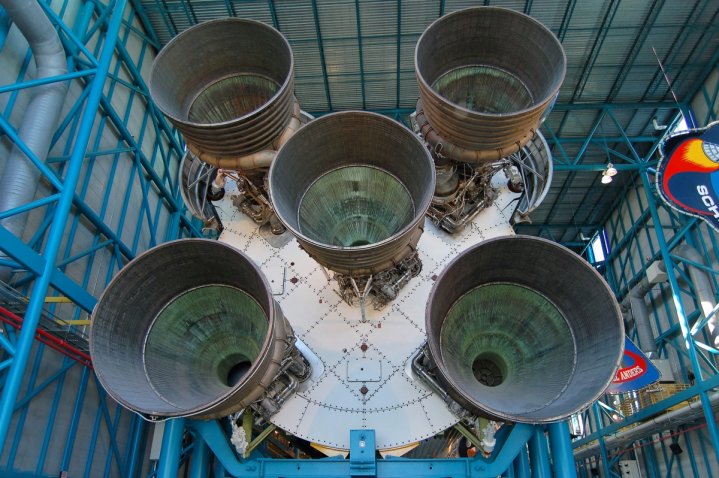
Fifty years ago on November 9 the tallest, heaviest and the most powerful rocket was launched into the deep space from the surface of Earth. It was taller than the Statue of Liberty and was even more enormous than six Boeing 747 jetliners. NASA had achieved this tremendous feat of launching the Saturn V booster 50 years ago on November 9, 1967.
The rocket has carried 24 astronauts to the moon and, also, placed the first ever space station of the United States into Earth's orbit. Right now, we know it as an icon of the U.S. space program. Saturn V booster made its maiden flight and launched the Apollo 4 mission on an "all-up" test of the vehicle.
"[If] we shall send to the moon ... a giant rocket ... capable of withstanding heat and stresses several times more than have ever been experienced, [and] fitted together with a precision better than the finest watch — then we must be bold," President John F. Kennedy had stated in 1962 while addressing students at the Rice University in Houston. Five years from that and the "giant rocket" became the first booster ever to be launched from NASA's Pad 39A at Kennedy Space Center in Florida.
Rocket scientist Wernher von Braun and his team had designed and assembled the rocket from more than three million parts furnished by an army of workers at 20,000 companies, universities and government facilities. Undoubtedly, the 363-foot-tall Saturn V rocket was an extraordinary accomplishment in terms of engineering.
The elevated booster, which stood poised, leapt off Earth on its maiden voyage at around one second past 7:00 a.m. EST. Five of its first-stage F-1 engines had to push the rocket and as a result, it gradually vanished into the deep dark sky.
"We have lift-off!" NASA's launch commentator Jack King had announced right after the historic occurrence. Fifteen seconds later, he had also stated on that noteworthy day that the vehicle had "cleared the tower." King had witnessed firsthand the effect of the launch and described it as, "The vibration from the Saturn V showered us with dust and debris from the ceiling of the Launch Control Center, which was brand new at the time."
The mission, which was exactly 8 hours 36 minutes and 59 seconds long had, ended with the Apollo 4 spacecraft re-entering Earth's atmosphere at around 25,000 miles per hour. The Apollo 4 capsule was recovered by the carrier USS Bennington.
NASA was, of course, overwhelmed and they announced the first launch of the Saturn V as an astonishing success.
"It was really an expert launching all the way through from lifting off exactly on time to the performance of every single stage," von Braun, the then director of NASA's Marshall Space Flight Center in Huntsville, Alabama, had said.
After the Apollo 4 mission, another final uncrewed test flight of the grand rocket took place. Apollo 6 was launched in April 1968. Eight months later, Saturn V launched Apollo 8 with a crew, which flew right on to the moon.
In total, NASA had conduccted 13 Saturn V launches from November 1967 to May 1973. The final flight of the booster carried a modified S-IVB stage into Earth's orbit, which became the Skylab, the first U.S. space station.
Also Read: US, China, India top 3 countries with highest number of citizens 'travelling' to Mars
Currently, NASA is working on the Space Launch System (SLS) rocket, a heavy-lift rocket, which in advanced configurations is expected to be taller and even more powerful than the Saturn V.









